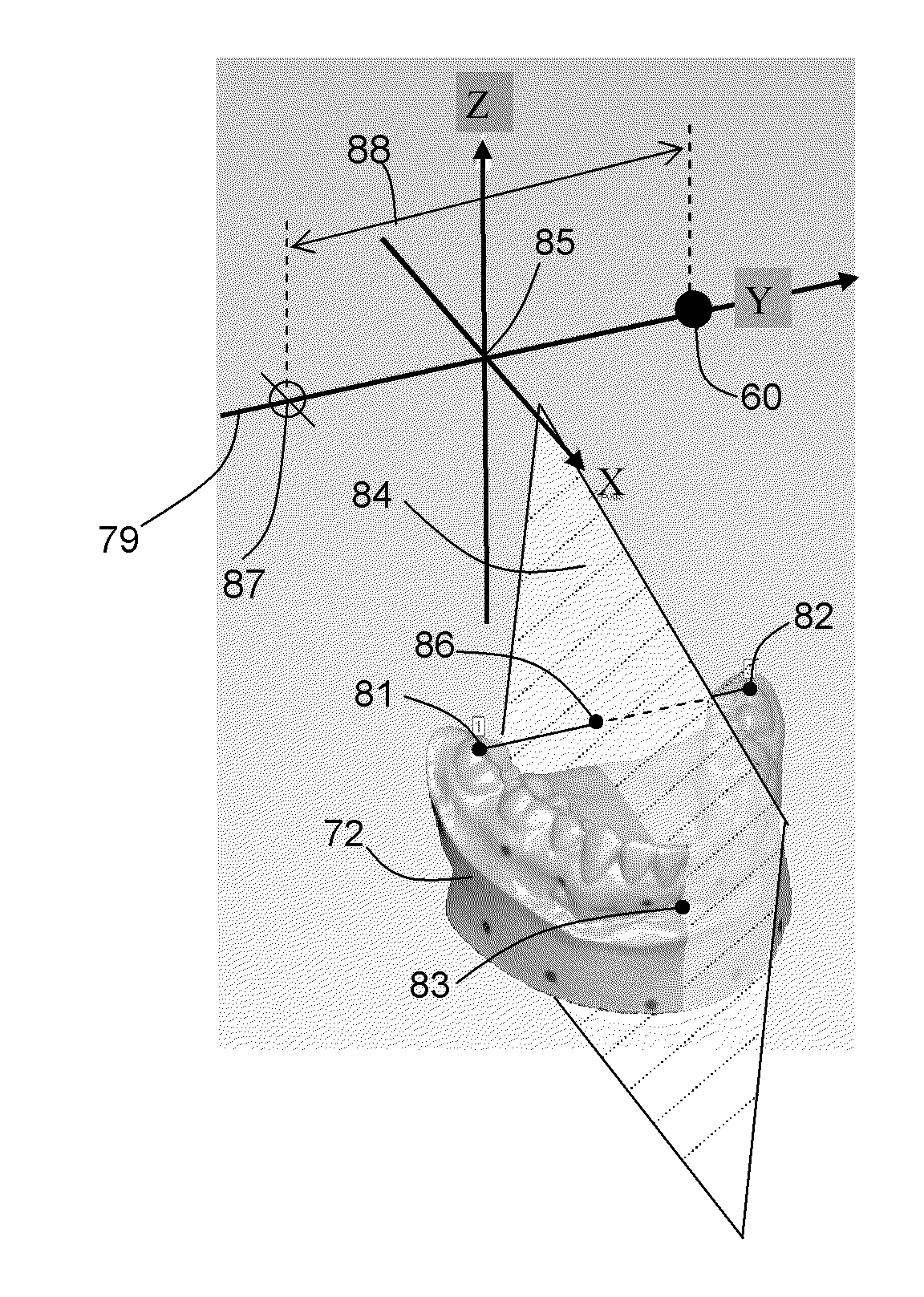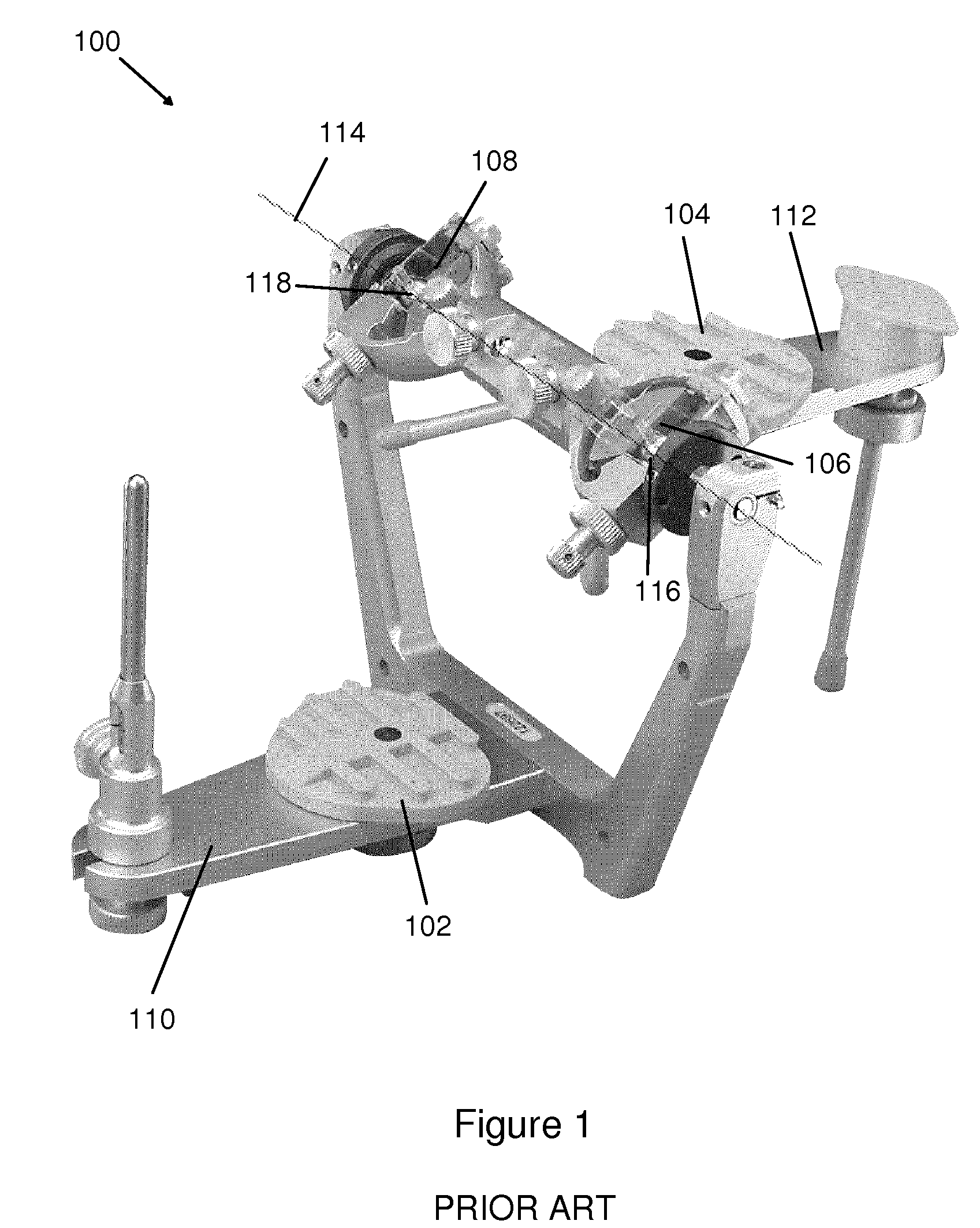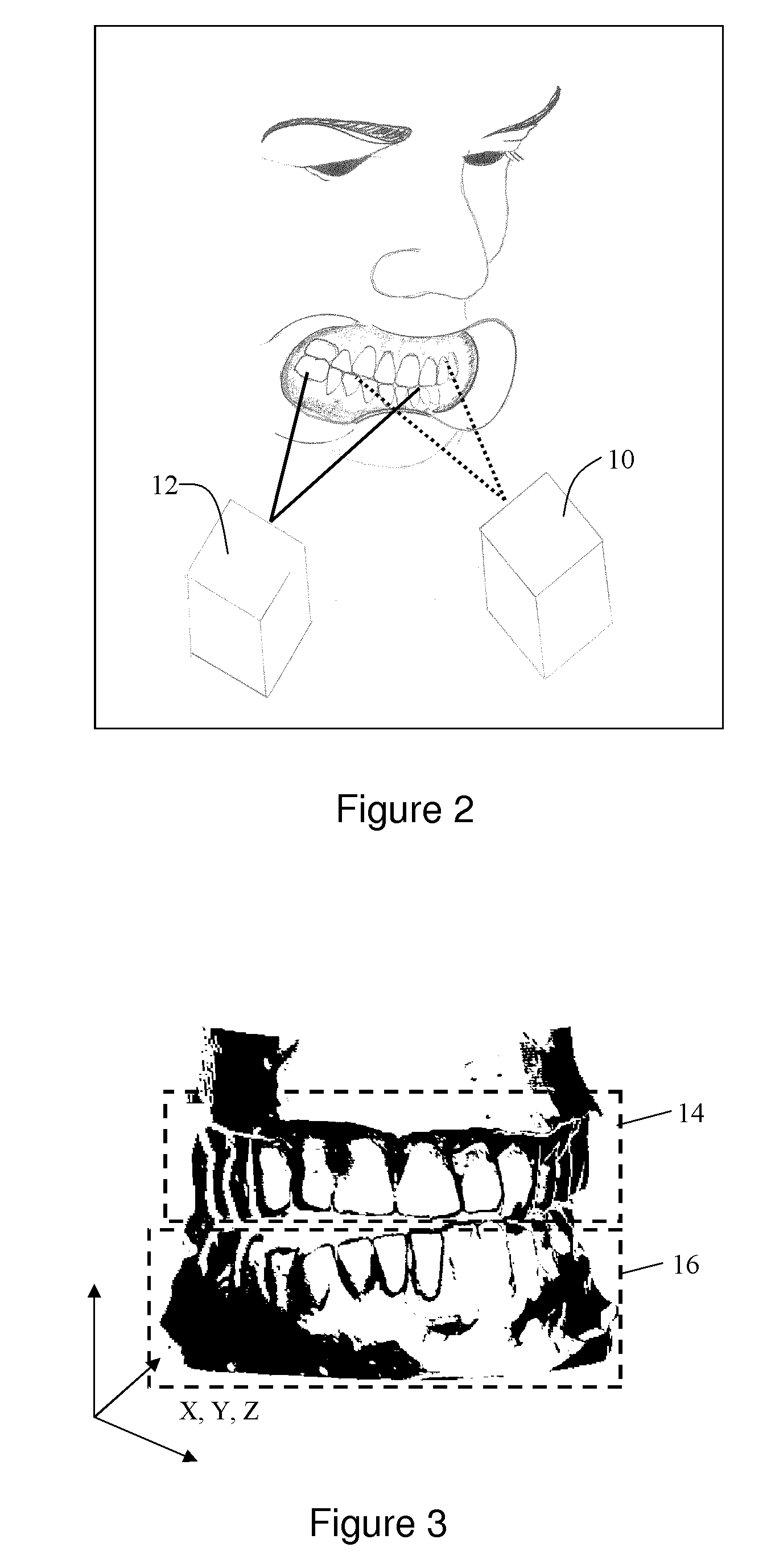Method Of Designing Custom Articulator Inserts Using Four-Dimensional Data
a four-dimensional data and articulator technology, applied in the field of dental devices, can solve the problems of inability to accurately model the articulator still cannot duplicate the jaw motion of a person, and the limitations of the articulator have become accepted practice,
- Summary
- Abstract
- Description
- Claims
- Application Information
AI Technical Summary
Benefits of technology
Problems solved by technology
Method used
Image
Examples
Embodiment Construction
[0040]4d Data Capture
[0041]A dataset that contains the instantaneous 3d relative position of the mandible of a person with respect to the skull may be captured by imaging or scanning a portion of the facial or buccal aspects of the upper and lower teeth and mucosa. The data used to render the 3d surface in the captured image may be obtained using laser or structured light, or photogrammetry targets. The dataset may be captured using a digitizer which may be an optical imaging device, capable of acquiring at least 1 image frame per second in three dimensions. A set of 3d images may be captured by such a digitizer; the set may be a time-based series of 3d images-known as a 4d sequence. Each 3d image in the time-based series may contain a digital record of the relationship between the upper and lower arches in three dimensions. The 3d image(s) may be obtained through intra-oral or extra-oral scanning.
[0042]Extra-oral scanning of the facial / buccal aspect of the oral anatomy may capture ...
PUM
| Property | Measurement | Unit |
|---|---|---|
| Time | aaaaa | aaaaa |
| Dimension | aaaaa | aaaaa |
Abstract
Description
Claims
Application Information
 Login to View More
Login to View More - R&D
- Intellectual Property
- Life Sciences
- Materials
- Tech Scout
- Unparalleled Data Quality
- Higher Quality Content
- 60% Fewer Hallucinations
Browse by: Latest US Patents, China's latest patents, Technical Efficacy Thesaurus, Application Domain, Technology Topic, Popular Technical Reports.
© 2025 PatSnap. All rights reserved.Legal|Privacy policy|Modern Slavery Act Transparency Statement|Sitemap|About US| Contact US: help@patsnap.com



